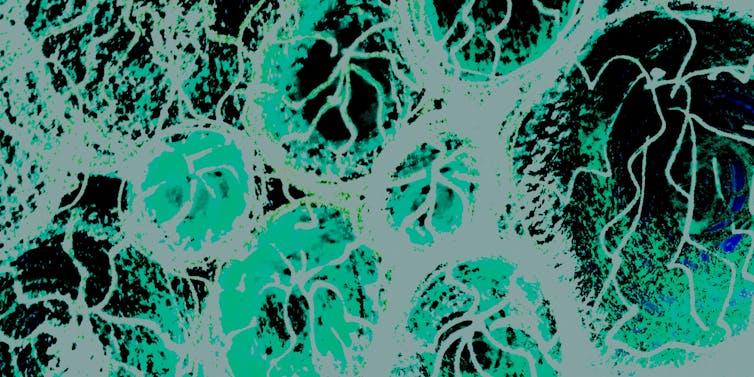
The natural world is filled with variety. Ecological systems can look very different in different parts of the Earth. Every species has genetic variation that means individuals can look and behave very differently. Diseases can affect people differently, with some suffering more serious complications than others.
I believe this pervasive variation, which I call poikilosis, is one of the most important aspects of biology. Yet it doesn’t receive anywhere near enough attention from scientists and doctors – or worse, it is treated as unwanted noise in experiments and studies.
I argue that without including poikilosis, results and observations cannot be fully understood, and that this can lead researchers to make overoptimistic estimates of the significance of their results. But if scientists were to take much greater account of variation it could lead to new ways of understanding biological systems, and perhaps new ways to treat disease.
Scientific measurements are typically standardised to have as low an uncertainty as possible. But because of poikilosis, biological systems can have a range of values even while that system is functioning normally.
In this sense, all measurements are equal and the full range of them should be equally considered. This is one of the things that is missed when statistical standardisations like mean and standard deviation are used.
Because poikilosis contributes to uncertainty in measurements and the occurrence of intervals in measurements, it affects what can be measured and learned from experiments.
There are several examples of widely used study systems that include wide variations. HeLa cells, which are the oldest human cell line, are widely used scientific research. However, strains grown in different laboratories display widely different properties. These differences have often been ignored, leading to unrepeatable observations.
Now think about the amount of variation that exists between different mice being used in different studies in different times and places. Unless scientists consider this poikilosis at many levels of the mouse model, I argue that it (and other such standard systems) has the potential to provide, at best, somewhat misleading outcomes or, at worst, fail altogether.
Ignorance of poikilosis may even be one reason for science reproducibility crisis, the problem that the results from many investigations, including very prominent ones, cannot be repeated. The Reproducibility Project tried to replicate 193 experiments in 53 publications in top journals. Only 50 experiments in 23 papers could be replicated.
There were several reasons for the failure, but none of the studies considered poikilosis. However, research has shown that when variation in animals used in studies is taken into account, that increases the reproducibility of research.
Systematic inclusion of poikilosis in scientific experiments would demand rethinking study designs, data collection, data analysis, statistics and data interpretation. Depending on the experiment and field, there are different ways to achieve this. But measurements that account for poikilosis typically demand for higher number of experiments than traditionally made.
Lagom, natural state
Poikilosis could also help us think differently about disease, and how to study and treat it.
Although poikilosis means variation is pervasive in biology, variations can be more or less extreme. We can use the term “lagom”, a Swedish concept for just the right amount – not too much or too little – to refer to the natural, balanced state of any system required for it to function normally. If a system has much more variation, we can say it enters a non-lagom state – for example, when we become ill.

We can apply this idea of lagom states to every level of a biological system, from a population of organisms to an individual organism or even organs, cells, molecules and everything in between. We can then create a model in which the lagom states of these levels are connected. When one level enters a non-lagom state, it can affect several other levels, potentially causing damage or impairing the functionality of the system or individual. If enough levels are affected it can lead to death.
For example, we can think about blood pressure as one level in the human body. Normal blood pressure in its lagom state is 120/80 or below. If it rises to unusually high and harmful levels it enters a non-lagom state.
But prolonged high blood pressure can also have an affect on other levels of the body such as arteries and heart muscles. Effects on these levels can lead to damaged arteries, heart failure and stroke. These systems are complex and there are many connected levels in this model.
We can use these ideas to help us develop specific models for biological processes. For example, I have developed a model for “biological regulation” (active alteration of the state of a biological system) known as the PLTR model. I’ve also proposed that considering how different levels could be brought back into lagom states by using the natural processes that normally restrict variation could also provide a new strategy for tackling some diseases.
In this way, a greater understanding and consideration of poikilosis could not only improve the reliability of the results of biological and medical research, but also force us to rethink some deeply ingrained concepts, such as disease and ultimately life and death.
Mauno Vihinen does not work for, consult, own shares in or receive funding from any company or organisation that would benefit from this article, and has disclosed no relevant affiliations beyond their academic appointment.
This article was originally published on The Conversation. Read the original article.







